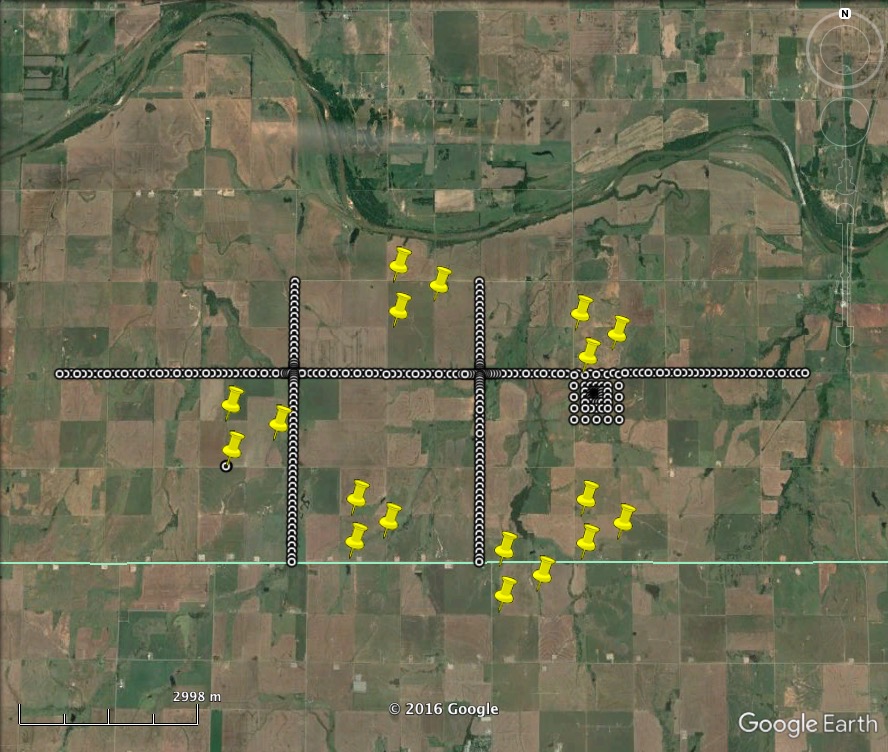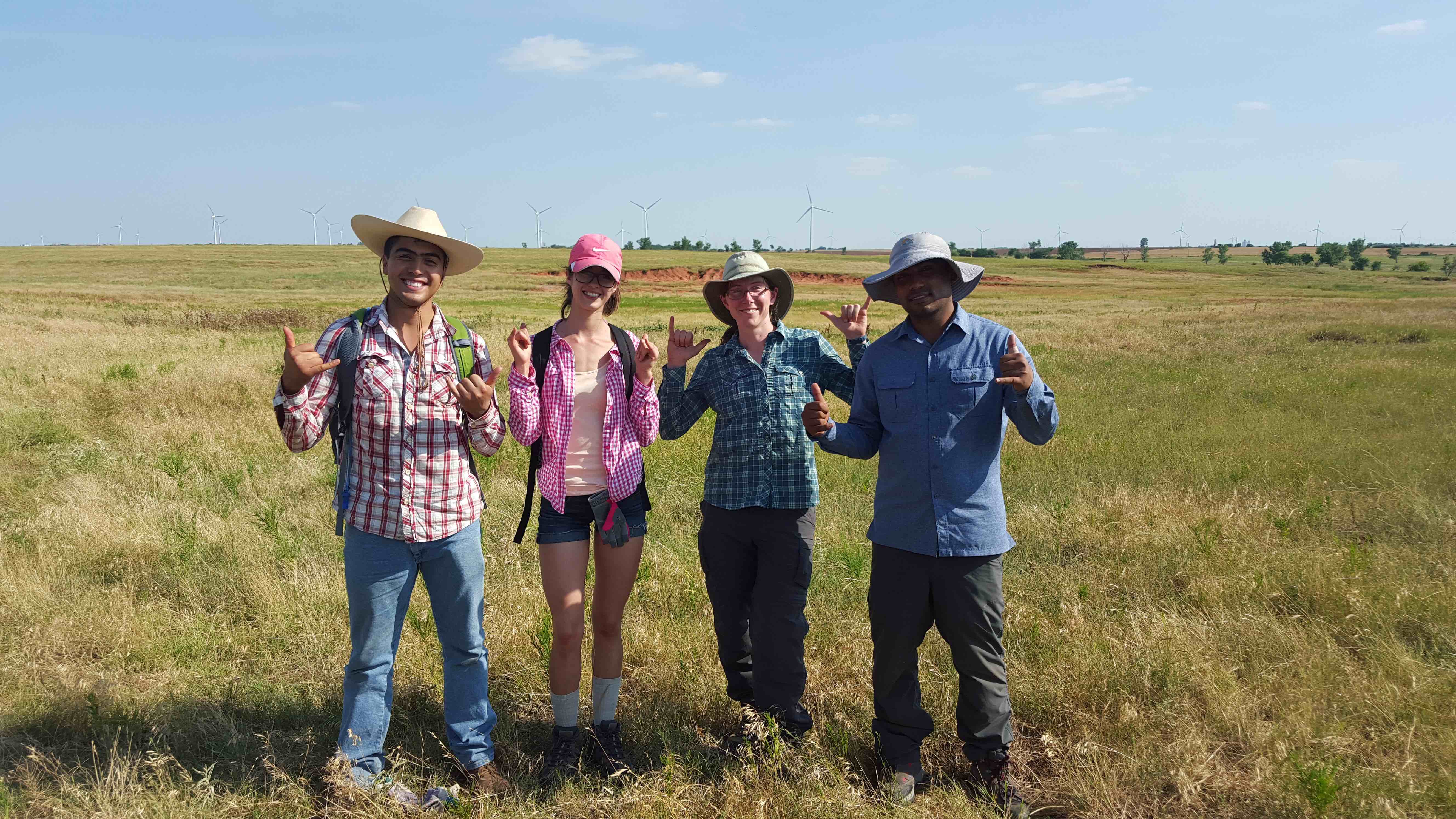
In June of 2016, IRIS led a community experiment to demonstrate the feasibility and usefulness of recording the full seismic wavefield. The experiment made use of new 3-component nodal sensors to deploy 3 seismic lines and a 7-layer nested gradiometer. In addition to nodes, 18 broadband stations were deployed in a "Golay" array design, along with 9 infrasound sensors co-located with 9 of the broadband stations.
The experiment was deployed above an active seismic lineament in north central Oklahoma in the hopes of recording a variety of seismic sources--both local and regional--in this seismically active part of the country.

Location of deployment in north-central Oklahoma

Overview of deployment. White dots are node locations, yellow pins are broadband Golay stations
A crew of nearly 50 people, including 30 supported graduate students from more than 20 institutions, participated in the deployment in June 2016. Participants worked in teams (3 broadband teams, 6 node teams, 1 infrasound team) and managed to install all 390 stations in 5 days. Beyond field work, educational aspects of the experiment included instrument training, nightly science talks, and opportunities for knowledge exchange with fellow students, post-docs, faculty, and staff.

The UTEP contingent (Solymar, Vanessa, Marianne, and Mohan) poses for a photo onsite
The final experiment design had 4 main components (click each for more):
Data collected during this experiment has been archived at the DMC (network code YW) and can be accessed here (link).
The products from this community experiment will not only include the data collected, but the community’s input on working with the IRIS PASSCAL Instrument Center to develop best practices and appropriate training for these new types of deployments.